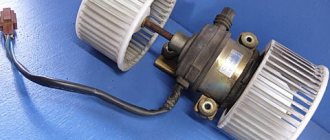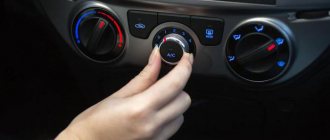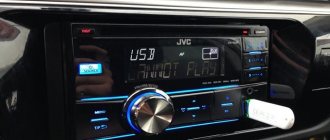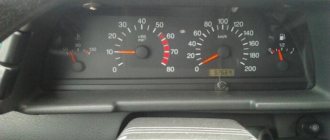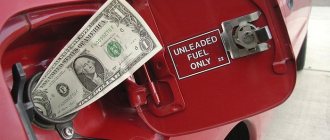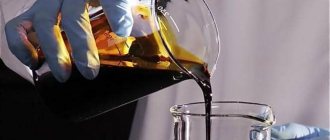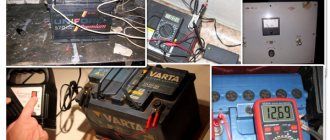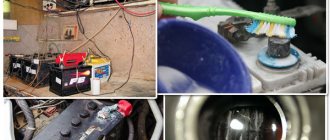Why does the car boil, possible reasons
Structurally, the cooling of a modern engine is not entirely ideal. This is the answer to the question why the car boils. The system is a combination of liquid and water type. Despite this, it has many disadvantages. The main problem is ensuring constant and efficient heat removal.
Usually difficulties begin in a closed circle system. This is air getting inside, antifreeze congestion, a decrease in the amount of coolant, scale. Because of this, the lines begin to work worse, individual elements are damaged, corrosion forms on internal surfaces - all these are the causes of boiling.
Engine cooling system diagram
The air system is entirely dependent on the operation of the fan. Violations cannot be ruled out here either. As a rule, they are associated with a drive, sensors, and electrical circuits.
In fact, the engine boils due to many reasons. It is very difficult for a novice driver to figure it out on the fly. It is customary to distinguish between two main groups: cooling failures and problems in the power plant itself.
Let's consider each case separately.
- The thermostat is stuck. One of the common boiling problems. The element stops due to wear in the closed position. Antifreeze does not pass into the radiator, which causes overheating. A thermostat malfunction is determined as follows: on a warm engine, touch any pipe with your hands. If it is cold, then this will confirm the guess.
- The radiator is clogged due to frequent driving on country roads. Debris is easy to see on the outer walls, but if it gets into the inner niches, you will have to thoroughly rinse everything. This will prevent the car from boiling.
- Faulty pump. In this case, the liquid does not circulate normally through the system. Quite often in this case, the water pump makes a squeaking, whistling or knocking noise.
- The fan is not working. This usually happens due to a broken temperature sensor.
- Faulty expansion tank. As you know, it has a special lid with a built-in valve. Its purpose is to remove excess pressure. If a breakdown occurs, then problems are immediately observed in the antifreeze supply devices. Because of this, the refrigerant begins to boil.
- Air jams. They are formed when the system is not properly filled with antifreeze or its level is insufficient. An air gap can be created in individual elements and contribute to boiling of the coolant.
Causes of boiling are also clogged lines, leaks, and the use of low-quality coolant.
Overheating is also caused by problems with the motor. Problems with the gearbox are also not uncommon, when, due to wear of the gearbox mechanisms, the unit begins to work under load.
What does proper battery charging mean?
In addition to the fact that it is necessary to unscrew all the plugs on old, domestic batteries, it is also worth remembering that the device must be charged using 10 percent current of the entire battery capacity. This means that a 60 Ah device must be powered with a current of 6 A.
If you exceed the permissible current rate, there is a high probability that irreversible changes will occur inside the battery. These changes will significantly degrade the performance of the device and reduce its lifespan.
It is important not only to charge the battery in a ventilated area, but also to protect the device from dust and dirt.
To summarize, it is worth saying that if the battery begins to boil while charging, then rest assured that in most cases this is an absolutely normal reaction. The appearance of bubbles and gas is evidence that the battery is about to complete its charging. All you need to do is control this process and timely turn off the memory. It is not recommended to leave the battery in this condition overnight. By applying the above tips and recommendations in practice, you will not have problems with charging and operating your car battery.
The car boiled - consequences
If the system is boiling, the degree of damage to the channels varies. Often this does not threaten anything dangerous, the owner of the car is simply limited by fear. But if an overheated engine stalls (and the battery has nothing to do with it), this may indicate the following things:
- destruction of the cylinder head seal;
- block damage;
- critical decrease in antifreeze level;
- damage or deformation of valves;
- Damage to valve stem seals.
Cylinder head destruction
The consequences of boiling are eliminated depending on the specific situation. Usually everything is solved by restoration and grinding of the cylinder head. Seizing of pistons in liners is rare. However, in this case, repairs seem impractical. It is much easier and cheaper to install another motor.
Constant overheating of the liquid and the release of steam is a symptom of a decrease in the amount of coolant. In this case, the engine will not cool properly even after cooling. If you do not take measures to refuel and simply cool the unit, the antifreeze will boil again. Heating in the area of combustion chambers and other heat-loaded parts will increase. The internal parts of the unit will become unusable, and the cylinder block itself will collapse.
Popular brands:
Volkswagen Passat
Why does the battery boil when charging?
A car battery is an electrical container capable of storing electric current, which the driver can use to illuminate the instrument panel when the engine is turned off and for many other purposes. The importance of this device in the life of a motorist can hardly be overestimated. And this is quite natural when boiling electrolyte causes a feeling of anxiety in a novice motorist, because such devices cost a lot today.
Inside the battery there is acid and special chemical plates that actively participate in the electrolysis process. This chemical term is generally considered to be the process of the action of electric current on a liquid. During this process, an active release of gas occurs, which creates the impression that the electrolyte is boiling when charging the battery. As you can see, it's all about chemistry here.
However, it is worth considering the following point. If the battery begins to boil immediately after connecting the charger, then there is a high probability that this device is truly unsuitable for further use. Instant boiling of all cans is most often evidence of the presence of closed plates inside the battery.
There are also the following common problems:
- If only one jar is boiling, this indicates that there is too little acid in it. Another reason could be crumbling plates inside the container.
- If the electrolyte boils in all jars except one, then this often indicates a small amount of electrolyte in the boiling containers.
- The battery can also boil when the electrolyte level is low; in this case, experienced motorists add the required amount of liquid to the container.
In any other cases, the battery must boil when charging, because almost every chemical process inside an acid battery is not complete without boiling the electrolyte. Simply put, if the battery has been charging for a long time and it begins to boil, the density of the electrolyte is almost restored.
What to do?
Some useful tips:
- any increase in temperature will indicate a decrease in the efficiency of the antifreeze supply devices - here it is important to be able to properly cool the installation;
- the simplest solution to lower the temperature is to turn on the cabin stove at full power;
- If a low level of anti-freeze is detected, it needs to be replenished - this is only allowed when the engine has cooled down.
First of all, the engine’s ability to overheat is indicated by the temperature arrow on the instrument panel approaching or moving into the red zone.
Temperature gauge on the dashboard
If the refrigerant temperature rises, the owner needs to act quickly. First of all, you need to stop the car. Then turn on the heater to maximum, which will make it possible to remove some of the engine heat into the cabin. Next, let the engine idle for a few minutes, then turn it off.
However, such instructions are not always useful - especially if smoke is constantly pouring out from under the hood and the stove is blowing cold air. Here you will have to dismantle the thermoelement. You can drive like this, but you shouldn’t delay with qualified repairs. In the cold season, the absence of a part will not allow the engine to warm up to operating standards.
On the other hand, temperature fluctuations are also observed. It can change while idle in summer in traffic jams and when traveling at low speeds.
Normally, a fan should handle the increased heat. Therefore, the scale needle will first rise, and then, after turning on the cooler blades, it will automatically fall again.
Power source in a car
In the electrical equipment of a car, the battery is a significant element: its main task is to start the engine. In addition, it powers consumers when the engine is turned off, as well as in addition to the generator when the engine is fully running. Thanks to the joint operation with the generator, the possibility of transient processes requiring maximum current is allowed and voltage fluctuations in the electrical network are equalized.
Battery device
The first lead battery was invented by the Frenchman Gaston Plante in 1859.
To date, minor changes have been made to it. In a car, the power source consists of independent elements connected in series. The device has a propylene body that is acid resistant and cannot conduct current. Each battery combines positive and negative electrodes, alternating with each other. They are covered by a layer of active mass. For positive electrodes, this mass is based on lead dioxide, while for negative electrodes, it is lead sponge. The plates with opposite polarity are isolated by a plastic separator.
For the manufacture of modern electrodes, a lead-calcium alloy is used. Such batteries have a low level of self-charging and minimized water consumption, which completely eliminates the need to add liquid throughout the entire operational period. All electrodes are placed in a solution of sulfuric acid - an electrolyte, the density of which directly depends on the charge level of the battery (the lower the charge, the lower the density and vice versa). There are two main types of batteries. They can be with solid or liquid electrolyte: the latter is currently the most common.
The tightness of the system is created by safety valves built into the battery plugs and activated when there is excess pressure. The battery is connected to the electrical network using two lead terminals.
Battery operation in a car
When charging a battery, electrical energy is converted into chemical energy, and when discharging, vice versa.
The battery is discharged when consumers are turned on. During this process, the active mass of the two types of electrodes interacts with the electrolyte, reducing the density and forming water and lead sulfate. The power source is charged by the generator while the engine is running, converting water and lead sulfate into lead, sulfuric acid and lead dioxide. The electrolyte density increases. .
The operation of the battery is affected by the ambient temperature. As it increases, the output power increases, along with which the corrosion of the electrodes and self-discharge increases. As the temperature decreases, the discharge capacity decreases, chemical processes slow down and the density of the electrolyte decreases. The absence of load does not stop the processes in the battery, and its self-charging continues.
What not to do when the engine is boiling
When the engine is boiling, the following actions on the part of the driver are strictly prohibited:
- increase engine speed, increasing the load on the internal combustion engine;
- stopping the car abruptly - it is better to turn on the interior heater to maximum heating;
- dilute the boiling liquid with cold water or antifreeze - this will easily lead to damage to the cylinder block, especially cast iron;
- check the condition of the antifreeze on a hot engine - it is important to allow time to cool, otherwise the boiling liquid may get on the skin and lead to severe burns;
- leave the car hood closed - after turning off the ignition, you must immediately lift the lid, ensuring a flow of fresh air to the engine;
- pour cold water on the motor - a sharp temperature change can cause cracks and breakages of the BC.
Experienced motorists begin diagnostics right on the spot. They competently check the pipes, pump, thermostat, and cooling fan.
Checking the cooling system pipes
If there is not enough experience for such actions, the car should be taken to the nearest service center. Highly qualified technicians and the availability of stationary equipment will allow them to quickly and correctly determine the cause of boiling. The problem is always fixed on the spot, following diagnosis.
Causes of boiling and their solutions
To begin with, we will analyze in detail all the reasons why antifreeze boils.
Pump corroded by antifreeze
To restore the functionality of the cooling system, and in future to prevent situations where antifreeze or antifreeze boils quickly, it is necessary to inspect the components listed above. Let us list the sequence in which it is necessary to check the specified components in accordance with the probability and frequency with which they fail.
As a rule, you only need to complete one of the listed points. However, in difficult situations, failure of several of the listed units is possible.
Often, boiling occurs when the car is moving in a lower gear while the engine is running at high speeds, for example, during long driving in the mountains or in city traffic jams in the summer heat. The situation is aggravated if the air conditioning is turned on, since it puts additional load on the cooling system, in particular the main radiator. Therefore, before traveling to the mountains, be sure to check the condition of the engine cooling system, including the level of antifreeze in it. If necessary, top it up or replace it.
How to get to the service
It's always better to call a tow truck. He will tow the car in various safe ways. This service is available in many cities and even villages of Russia. You can call for help by phone.
On the other hand, if the road goes downhill to the technical center, you are allowed to drive in idle gear. It is advisable to roll the car with the heater on. If it stops and there are still a few kilometers left to your destination, you can go, but constantly monitor the temperature on the board. If it increases again, there is no point in continuing the journey.
How to avoid engine boiling in the future
The car owner will be saved by constant temperature control. It is indicated by an arrow on the instrument panel. At the same time, you need to select the right antifreeze. You shouldn’t skimp on its quality even in summer. In addition, the coolant must not be mixed - it must be the same color and quality as that used in the lines.
It is extremely important to be able to quickly check the car’s cooling system and eliminate the causes of this situation. Therefore, it is recommended not to delay and immediately seek help from a technical service center.

